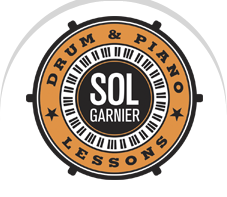We are busy. From the moment we wake up to bed, we don’t stop. And it is great. It’s exciting.
But we want to study an instrument. That activity, the saying goes, requires to practice. And by practice, we mean sitting down at the instrument and start playing it. Right?…
Right?
Actually…
Actually, there are some alternatives. To putting your hands on the instrument and play, I mean. There are alternative to this kind of practice.
First of, there is the very productive and widely overlooked practice of listening. Since I already have done many blogs on this one, I’ll just sum it up. Maybe step one is to get some good gear to listen to music with. A nice pair of headphone could be fairly cheap. Some nice speakers. A good amp. Etc… Step two is to listen to music with eyes closed. Pick whatever you want and turn off the lights. You will hear more stuff, you will become a giant pair of ears. Step three: try classical music. For drummer, it is, bar none, the best kind of music to stretch your ear. For that, you find a composer you like and you dive in. Symphonic music is better if the intention is to stretch your ears. Step four is to notice structure, melody, form, rhythm, harmony, orchestration, space, emotion in the music. You can listen passively, of course. But we are talking about practicing here. Meaning, don’t flat-line the experience. Get something out of it. If need be, have a piece of paper and a pen to write down a few things while you listen. Last but not least of the step: don’t hesitate to listen several time to the same song, and every time with a different intention.
Ok, all right. There is much more to be said and done on the subject (you would have to take lessons with a competent teacher to dig into the concept, and, would-you-know-it? I just so happen to know such a teacher!) but I’d like to move on.
Other ways of practicing.
Use your head. Yes, use your head. You can practice in your head.
It goes like this. Right this way, follow me. Watch your step.
You can be in your car. On a train to work. On a boat to work. On a lounge chair. In a doctor’s waiting room. My point is you are in transition time. You do know “transition time”, every one experiences those every day. It is those time where you just become a package. There is nothing to do, not much to think about either. It’s the “in-between-two-things” time. I picked places where your body is not moving. Where you are either lying down or sitting down. That’s better for what you want to do.
You want to use your brain. Moving the body distract the brain.
So, you place your hands on an imaginary keyboard or holding some invisible drum sticks. And you start practicing. You move those hands, those fingers just like you would if you had the real instrument in front of you. Musicians do it all the time. They don’t necessarily need a drum set to get going. Just a steering wheel will do. By the way, if you are in Chicago and you see some nut banging on the steering wheel while waiting for the light to turn, she’s probably one of my student. I take responsibility for her. It’s my fault. But if you are in a place where moving your hands would be too weird, just close your eyes and imagine moving your hands. Study shows that you get a lot of benefit doing just that, it trains you to feel your instrument. It still counts apparently.
That’s 2 ways to practice without an instrument. That’s not bad for one blog. Free little nugget of knowledge.
